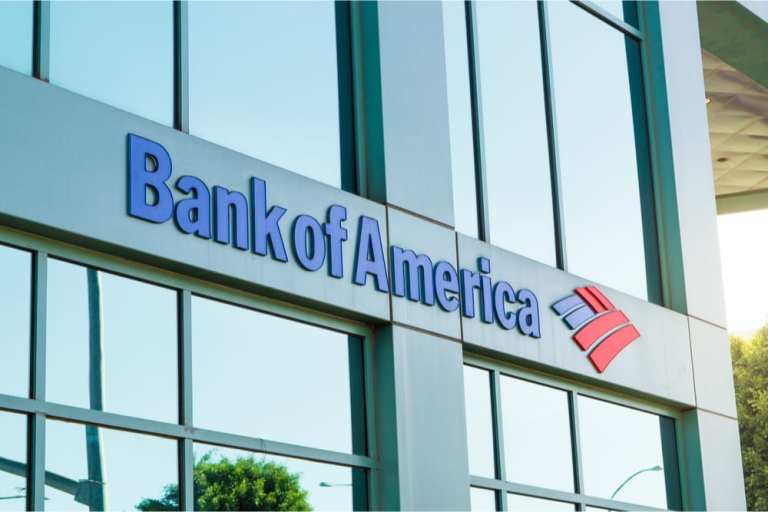Given the full-scale shutdown in the U.S. and across the world, one might have expected that quarterly earnings season would be a less than sunny experience. Bank of America’s quarterly earnings report yesterday bore that out as the bank reported a 48.5 percent drop in first-quarter net income on Wednesday (April 15) and announced it was setting aside an additional $3.6 billion to cover the potential losses in the recession the bank predicts is coming as a result of the ongoing coronavirus pandemic.
BofA, incidentally, is not the only big bank in the U.S. to make such a determination — JPMorgan Chase & Co, Citigroup Inc. and Wells Fargo & Co. also announced bulked up reserves in preparation for a recession, bringing the total funds put aside by the nation’s four largest banks to $14.2 billion in loan loss provisions.
But as Bank of America CEO Brian Moynihan noted during his earnings call with investors, given the circumstances on the ground in the U.S. and around the world, the focus for everyone has to be on battling back the coronavirus first and re-opening the economy second. Bank of America and other financial services industry players, he said, have a unique responsibility to bridge the gap between those two events.
“As I have said many times, we are in a war against the COVID-19 and at Bank of America we are doing our part to help fight the effects of that war,” Moynihan said. “We are helping people manage their financial lives through this crisis.”
Moynihan noted that since the start of the coronavirus crisis, the bank has received more than 1 million requests for assistance through early April. Deferral requests, however, seem to have peaked about a week ago, though the bank is continuing to monitor the situation. In terms of the number of requests for forbearance, cardholders have been the leaders, though in terms of percentage of requests for loans, small business clients top the board. Requests for deferrals on mortgage payments have been relatively low in volume, according to Moynihan — though the bank has preemptively suspended foreclosures or repossessions of autos, which may have been pending before the crisis began.
And apart from pushing the pause button on loans small and medium-sized business (SMB) customers have taken out, the bank has also been busy trying to get federal Paycheck Protection Program (PPP) funds to those clients. Trying, though from the sound of things it is not clear any money has actually made it into the hands of any SMBs yet.
Advertisement: Scroll to Continue
“For small business clients, we built the first digital platform for the PPP program and we launched it 12 days ago. The team is working hard to drive over 300,000 requests for funding through the process so that we can get those loans funded,” Moynihan said.
He did note, however, that as of Wednesday the first round of COVID-19 federal stimulus funds had started hitting consumers bank accounts, and that the bank had started to see the additional $600 added to unemployment appearing in direct deposits. Those injections of funds might stimulate consumer spending activity, he noted, but what their effect going forward will be is still unclear because they are “just barely hitting the general consumer, general business, et cetera” and “didn’t exist literally three weeks ago.”
But, given the virtual stop in consumer spending BofA reported during the quarter, it is hoped the funds do something to stimulate activity as the coronavirus crisis wears on. Though Q1 2020 had been forecast to produce continued and perhaps even strengthened spending activity, the coronavirus quickly reversed that course.
“We saw a severe immediate decline in discretionary payments for travel, leisure and other things that you have read about. This was followed immediately by large increases in payments for necessities around groceries and staples like health supplies, et cetera,” Moynihan told investors. “Then as large cities and states began to move to voluntary and mandated stay-at-home status, we saw large declines in debit and credit card spending into other categories.”
Growth fell from the 7 percent to 8 percent range in January and February to roughly 2 percent in March, according to BofA’s numbers — and has started to decline into negative territory in April. The bank also reported that though branches remain open, traffic is down by more than 50 percent. There has, however, been a pickup in digital banking happening concurrently.
Demand for loan products has also fallen. For the first two weeks of April compared to February average levels, card origination is down 55 percent, mortgages are down 40 percent and car loans are down 60 percent. Moynihan noted, as became a running theme during the call, that Bank of America will continue to watch those trends to see if they intensify in April or begin to level off.
All in, for the quarter the bank posted profits of $4.01 billion, or 40 cents a share, compared with the 46 cent estimate of analysts surveyed by Refinitiv. Revenue came in at $22.8 billion, in line with expectations, and trading results exceeded expectations by more than $500 million. But given the bank reported losses in three out of four of its main divisions — and uncertainty was the main theme of the bank’s call with analysts — investors were unsurprisingly rattled.
Bank of America shares fell 6.5 percent upon the earnings posting yesterday.




